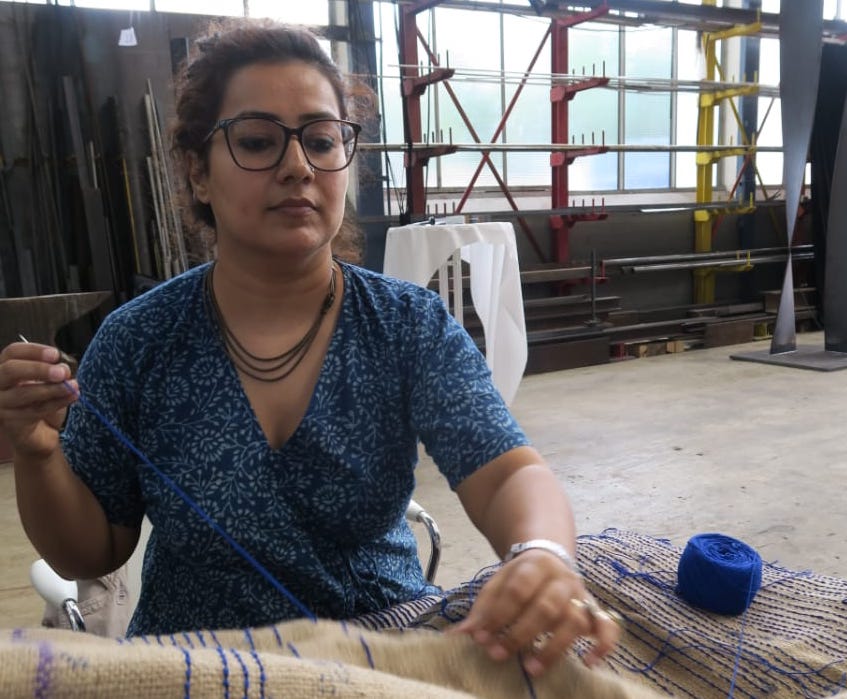I am Archiving for Us
Meenakshi Nihalani’s practice and research traces the roots of ongoing agrarian discontent to the 1700s, to reveal the extent to which unfair policies, taxation and fraudulent deals colluded during the colonial era to diminish the relevance of agriculture to the footnotes of history, in a context that has historically relied on farming. She draws inspiration from the indigo revolution, which laid the foundation for Champaran Satyagraha, the first of Gandhi’s peaceful demonstrations in resistance to colonial rule. The indigo revolt was one of the earliest movements to shed light on agrarian discontent and colonial oppression by raising voices against the stark economic divide between European indigo factory owners and Indian farmers who were forced to cultivate indigo on lands leased from local zamindars, with their support and that of local kings. The struggle for Independence in India can only be written in indigo for the mobilizing of popular sentiment in a country where 60 percent of the population relied on agriculture depended on the support of farmers. Indigo cultivation requires large quantities of water, which was heavily taxed, and left the soil extremely infertile, making it unable to grow food crops such as rice and pulses, especially as famines raged episodically causing the loss of millions of lives. Until the arrival of synthetic dyes, the once lucrative indigo dye amassed fortunes for several Asian and European traders and companies, besides financing the first World War. Working with indigo dye and jute textile that is common in the indigo growing areas of Bengal and Bihar, the artist in this series of works captures altered topographies, erasure of cultural identities and transparently exploitative policies for the sake of indigo cultivation under colonial rule, providing a blueprint for the continued marginalization of farming communities in subsequent decades, and a counter-narrative to capital driven economies and industrial development.

Meenakshi Nihalani is a visual artist based in Mumbai, India. She received her bachelor’s degree in Sculpture from the Sir J.J. School of Fine Arts, Mumbai. Her artistic research presents the social, psychological and geological impact of British Colonialism on farmers highlighting the absurd play of politics and power on their destinies. She has received a Scholarship Residency from Fundaziun Nairs in Switzerland (2019), a Scholarship exhibition from Honorary Indian consulate in Stuttgart in 2018, and also artist residencies in Berlin, Netherlands, Zurich, Belgium, and India. She also received the 2017 Lord Mayo Memorial Award for her sculpture during the Annual exhibition at Sir J.J School of Art.